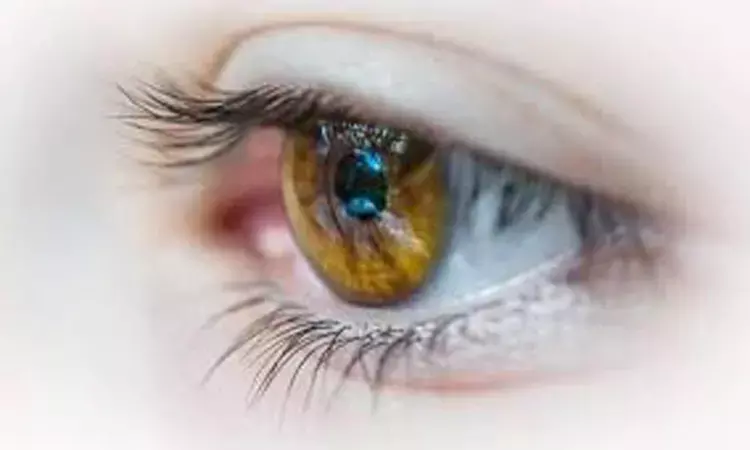- Home
- Medical news & Guidelines
- Anesthesiology
- Cardiology and CTVS
- Critical Care
- Dentistry
- Dermatology
- Diabetes and Endocrinology
- ENT
- Gastroenterology
- Medicine
- Nephrology
- Neurology
- Obstretics-Gynaecology
- Oncology
- Ophthalmology
- Orthopaedics
- Pediatrics-Neonatology
- Psychiatry
- Pulmonology
- Radiology
- Surgery
- Urology
- Laboratory Medicine
- Diet
- Nursing
- Paramedical
- Physiotherapy
- Health news
- Fact Check
- Bone Health Fact Check
- Brain Health Fact Check
- Cancer Related Fact Check
- Child Care Fact Check
- Dental and oral health fact check
- Diabetes and metabolic health fact check
- Diet and Nutrition Fact Check
- Eye and ENT Care Fact Check
- Fitness fact check
- Gut health fact check
- Heart health fact check
- Kidney health fact check
- Medical education fact check
- Men's health fact check
- Respiratory fact check
- Skin and hair care fact check
- Vaccine and Immunization fact check
- Women's health fact check
- AYUSH
- State News
- Andaman and Nicobar Islands
- Andhra Pradesh
- Arunachal Pradesh
- Assam
- Bihar
- Chandigarh
- Chattisgarh
- Dadra and Nagar Haveli
- Daman and Diu
- Delhi
- Goa
- Gujarat
- Haryana
- Himachal Pradesh
- Jammu & Kashmir
- Jharkhand
- Karnataka
- Kerala
- Ladakh
- Lakshadweep
- Madhya Pradesh
- Maharashtra
- Manipur
- Meghalaya
- Mizoram
- Nagaland
- Odisha
- Puducherry
- Punjab
- Rajasthan
- Sikkim
- Tamil Nadu
- Telangana
- Tripura
- Uttar Pradesh
- Uttrakhand
- West Bengal
- Medical Education
- Industry
Automated pupillometry may help predict dosing of opioid agonist therapy for opioid use disorder

Boston, MA: In a new study, Crandall E. Peeler and colleagues found that automated pupillometry exhibited a minor but significant change in mean pupil size within 15 minutes after opioid agonist therapy (OAT) dosage and was linked with low withdrawal ratings. The findings of this study were published in the Journal of Addiction Medicine.
The severity of opioid withdrawal is graded using a crude visual assessment of pupil size. Little research has been conducted to investigate the clinical value of more precise automated pupillometry measures. Keeping this in mind, the following research was conducted to see if there is a statistically significant change in pupil size and reactivity, assessed to the hundredth millimeter using automated pupillometry, related with acceptable withdrawal symptom management in a diverse convenience sample of patients on methadone or buprenorphine for OUD. The secondary goal was to see how rapidly this change might be identified after OAT treatment.
During an acute hospitalization, 27 patients were included in this prospective cohort research to receive OAT to treat cravings or withdrawal. Six sets of automated pupillometry measurements were taken at regular intervals before and after OAT delivery. Pre and after OAT Clinical Opiate Withdrawal Scale readings were taken. The primary objectives included pupil size in both dim and bright lighting (mm). Secondary results were pupillary light response latency (s), constriction and dilation velocity (mm/s), and percent constriction (percent).
As a result, in both dim and strong light, the mean predosing pupil size was 4.33 1.40 mm and 2.96 0.79 mm, respectively. At 15 minutes post-dosingidentify, a substantially reduced mean pupil size was identified (4.01 1.34 mm, P = 0.0115 for dim lighting; 2.71 0.72 mm, P = 0.0003 for bright illumination), and this reduction in pupil size remained at further post dosing timepoints. Those who had a Clinical Opiate Withdrawal Scale 5 following dose saw a larger decrease in black pupil size. The remaining pupil reactivity metrics did not alter much.
In conclusion, it has been reported that using automated pupillometry, a minor but substantial shift in pupil size is identified immediately after OAT dose, which is linked with effective management of withdrawal symptoms. With further research, it is hoped that this objective measure can assist to teach or empower more healthcare practitioners to manage opioid withdrawal and improve outcomes for individuals with OUD.
Reference:
Peeler, C. E., Gorgy, M., Sadlak, N., Sathe, S., Tamashunas, N., Fiorello, M. G., Cabral, H., Paasche-Orlow, M. K., & Weinstein, Z. M. (2020). A Pilot Study of Automated Pupillometry in the Treatment of Opioid Use Disorder. In Journal of Addiction Medicine (Vol. 15, Issue 6, pp. 477–483). Ovid Technologies (Wolters Kluwer Health). https://doi.org/10.1097/adm.0000000000000794
Medical Dialogues consists of a team of passionate medical/scientific writers, led by doctors and healthcare researchers. Our team efforts to bring you updated and timely news about the important happenings of the medical and healthcare sector. Our editorial team can be reached at editorial@medicaldialogues.in.
Dr Kamal Kant Kohli-MBBS, DTCD- a chest specialist with more than 30 years of practice and a flair for writing clinical articles, Dr Kamal Kant Kohli joined Medical Dialogues as a Chief Editor of Medical News. Besides writing articles, as an editor, he proofreads and verifies all the medical content published on Medical Dialogues including those coming from journals, studies,medical conferences,guidelines etc. Email: drkohli@medicaldialogues.in. Contact no. 011-43720751


